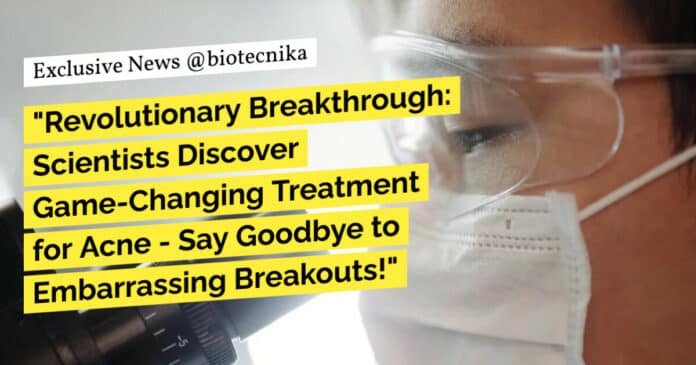
Game Changing Treatment for Acne
Scientists have made a breakthrough in the treatment of acne, a common and often distressing skin condition. Acne vulgaris, which is caused by an overgrowth of a skin bacterium called Cutibacterium acnes, results in uncomfortable outbreaks of small pustules. While current treatments like antibiotics or hormones that reduce skin oils can help control the bacteria, they often come with side effects or become ineffective as the bacteria adapts.
However, researchers from the University of South Australia, the University of Adelaide, and Aix-Marseille Université in France have discovered a potential game-changer in the form of a powerful new molecule. The molecule is based on an antibiotic called narasin, which is commonly used to prevent infections in livestock and poultry. Unlike other antibiotics, C. acnes has yet to develop resistance against narasin.
In the study, the researchers demonstrated that narasin, when delivered inside microscopic envelopes called nano-micelles, could penetrate deeper into the skin than when it was mixed with water alone. The use of Soluplus, a compound that improved the solubility of the nano-micelles and the stability of the drug delivery, played a crucial role in this enhanced penetration. The nanoparticle delivery system improved solubility by over
100 times compared to a water mix.While the experiments were conducted using pig ear skin, the ultimate goal is to deliver the narasin gel to the hair follicles below the skin, where the C. acnes bacteria thrives. The gel developed by the scientists also remained stable at room temperature for four weeks, suggesting its potential use as a topical treatment.
Further research is needed to determine how effective this treatment will be on actual people, but these initial findings are promising. If successful, a narasin nanoparticle gel could effectively target and combat the acne-causing bacteria.
Game Changing Treatment for Acne- Acne is a widespread condition, affecting approximately 9.4 percent of the world’s population, mainly adolescents. It can cause distress, embarrassment, anxiety, low self-confidence, and social isolation among sufferers. While there are oral medications available for acne, many have negative side effects and are poorly water-soluble. This is why most patients and clinicians prefer topical treatments.
Understanding the causes of acne and developing effective treatments is crucial, especially as existing treatments become less effective due to antibiotic resistance. This new molecule-based treatment shows potential in addressing the limitations of current therapies and providing relief to those affected by acne.
Overall, this groundbreaking research presents an exciting development in the field of acne treatment. With further investigation and clinical trials, this powerful new molecule could make a significant difference in the lives of millions struggling with acne.
Keywords: acne, skin condition, acne vulgaris, bacteria, Cutibacterium acnes, treatment, antibiotic narasin, nanoparticle delivery, nano-micelles, solubility, stability, gel, hair follicles, acne-causing bacteria, topical treatment, adolescents, antibiotic resistance.


























